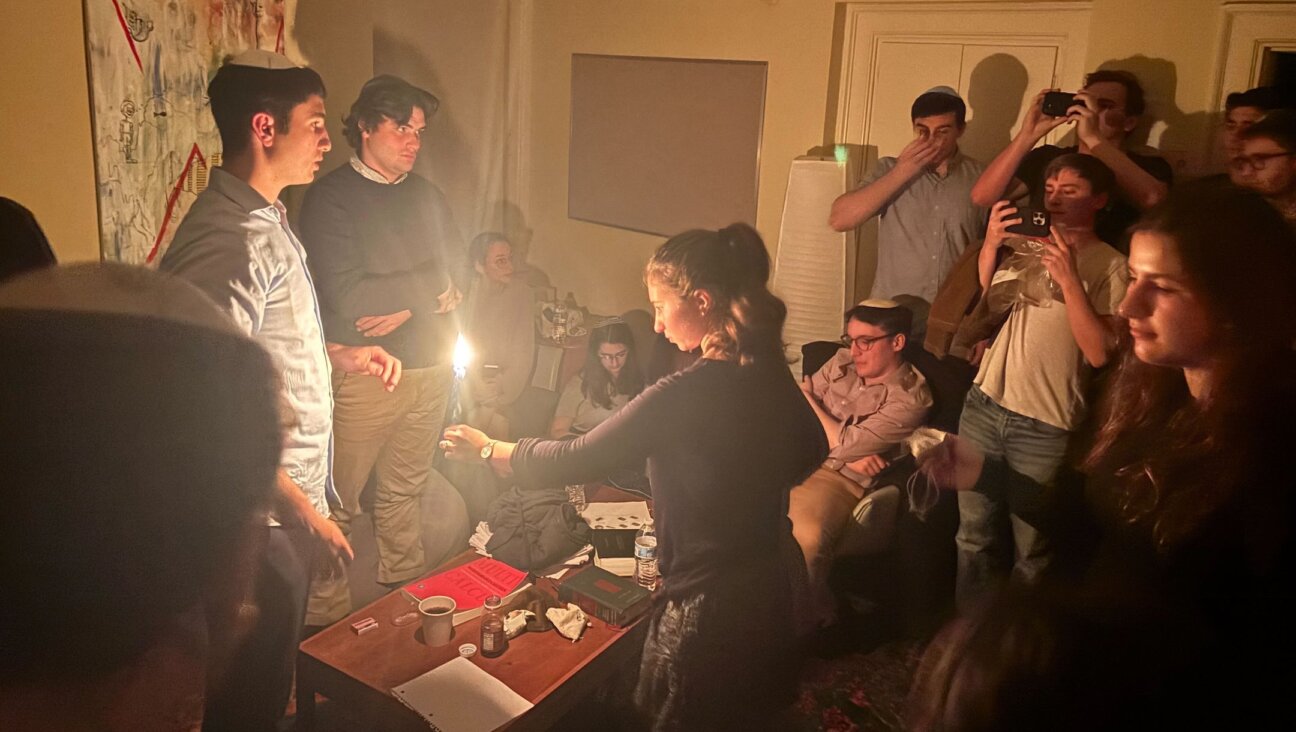In the News Again, Tuberculosis Victims Have History of Seeking Cures Far and Wide
My work usually doesn’t take me too far away from home, but last month, as it happened, I found myself in Denver, where, as a guest of the Rocky Mountain Princeton Alumni Association, I had come to give a speech. Wined and dined by those “Tigers” who now call the “Mile High City” and its environs their home, I was made to feel most welcome.
Earlier generations of American Jews were not quite so fortunate. With no network of university alumni, let alone landsmen, to rely on, those who came to Denver in the early years of the 20th century in search of clean air and healthful surroundings had a rougher time of it, at least at first. Known as “respiratory refugees,” they hoped to find some relief from the enervating effects of tuberculosis (aka consumption) by exchanging the tenement for the sanatorium. Grass-roots organizations such as the Jewish Consumptive Relief Society, whose pushkes were everywhere in Jewish immigrant neighborhoods, made relocation possible.
Tuberculosis was not just a “Jewish disease,” as some 20th-century observers would have it, even though it was widely associated with Jewish immigrants. A highly infectious disorder spread by coughing, spitting and handshaking, tuberculosis was an urban phenomenon whose etiology was entirely bound up with the institutions of the modern metropolis: the department store, the movie house, the restaurant, the subway and the well-trafficked street.
But then modernity also made possible its eradication, inspiring health reformers in the years prior to World War I to enlist a wide array of the most up-to-date visual strategies to call attention to the disease. Taking to the streets, the National Tuberculosis Association sponsored parades, prominently displayed “Don’t Spit” signs in Yiddish and Italian as well as in English, and mounted exhibitions at several of the nation’s most prestigious museums, among them New York City’s American Museum of Natural History. Replete with an oversized reproduction of a disease-bearing fly, this 1908 exhibition drew thousands of viewers who were eager to see for themselves how tuberculosis took hold of the body politic.
The nation’s leading and most imaginative anti-tuberculosis society even made use of the then-embryonic medium of film to herald preventive health measures. Its 1914 motion picture, “The Temple of Moloch,” for instance, melodramatically told of the efforts of a young doctor to assist a working-class family laid low by the disease. In the course of things, movie-going audiences learned about the proper use of the broom and about the most effective forms of ventilation.
For thousands of tuberculars, though, the deployment of inventive health measures came too late. Racked with frequent coughing, too weak to work or eat, these people were encouraged by their doctors to leave the city for more salubrious environments out west where they could restore their bodies and their spirits by spending several months outdoors, doing little else but recuperating. “Sufficient fresh air, sufficient food, and sufficient rest and sleep are the watch-dogs [sic] of health, and where they are on the alert, consumption can never enter,” insisted Lawrence Flick, a Pennsylvania physician who authored a pamphlet about the dangers of tuberculosis.
Heeding his message, thousands took to the hills, prompting one Denver nurse to write as early as 1907 of a “vast army of sufferers… continually pouring into Colorado.” Some of the American Jews among them sought admission to the National Jewish Hospital, an institution established and administered by Denver’s German Jewish community. Others, especially those who kept kosher, preferred the facility maintained by the Jewish Consumptive Relief Society. As historian Alan Kraut documents in “Silent Travelers: Germs, Genes, and the ‘Immigrant Menace,’” his pioneering 1994 study of the relationship between immigration and health, the administration of the National Jewish Hospital frowned on the dietary laws, arguing that they were “inadvisable for medical reasons.” The powers that be at the Jewish Consumptive Relief Society, on the other hand, endorsed kashruth, dismissing as “mere nonsense” the notion that it might interfere with the recovery process. On the contrary. To their way of thinking, adherence to kashruth and other traditional rituals might actually hasten it.
Left to their own devices, residents at both sanatoria had a lot of free time on their hands. Some idled away the hours by writing letters back home, others by reminiscing and still others by contributing to the Jewish Consumptive Relief Society’s official publication, “The Sanatorium,” or by creating a newsletter all their own, which they called Hatikvah (The Hope). “The Invalid,” a poem written in Yiddish by A. Druskin and published in Hatikvah in 1923, gives voice to the plight of those suffering from tuberculosis so far from home.
“Chained
Sickness holds me down
Tho free, I lie in bed a captive,
I cannot tear my eyes
From your bewitching mountains
That weave in majestic peace,
With blue transparent light
Their eternal mountain dreams.I stretch out my arms to them
And it seems to me
I feel their cool breath
That brings relief
To my fever burning body —
But I drop my hands,
I cannot reach the far mountains….”
















